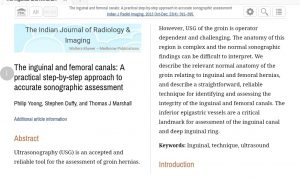Journal Club
Focal testicular lesions: colour Doppler ultrasound, contrast-enhanced ultrasound and tissue elastography as adjuvants to the diagnosis
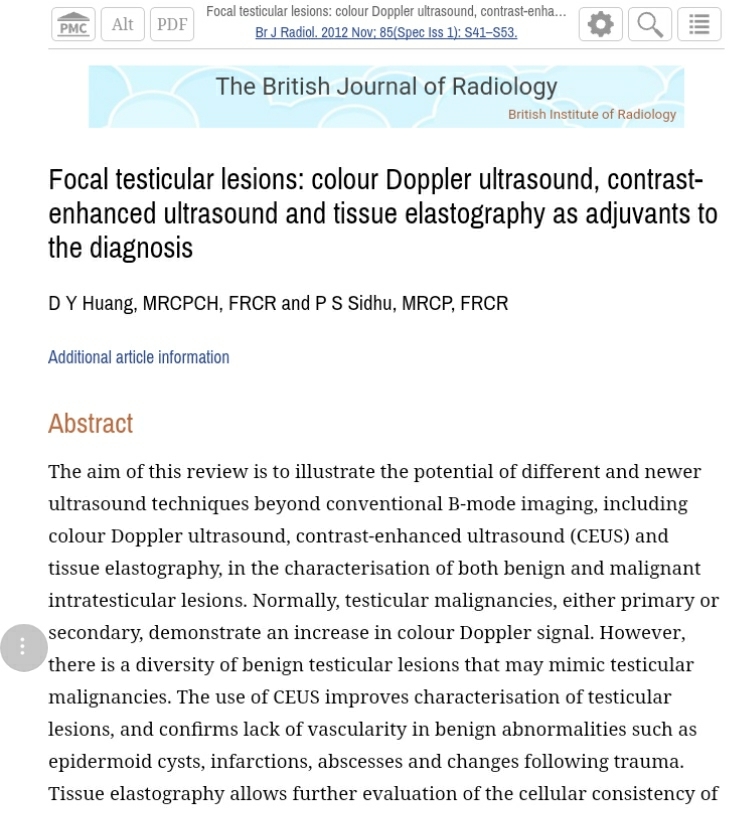
Read the complete article at: https://www.ncbi.nlm.nih.gov/pmc/articles/PMC3746409/
Journal Club: Endosonography of benign myometrium cysts and cyst-like lesions
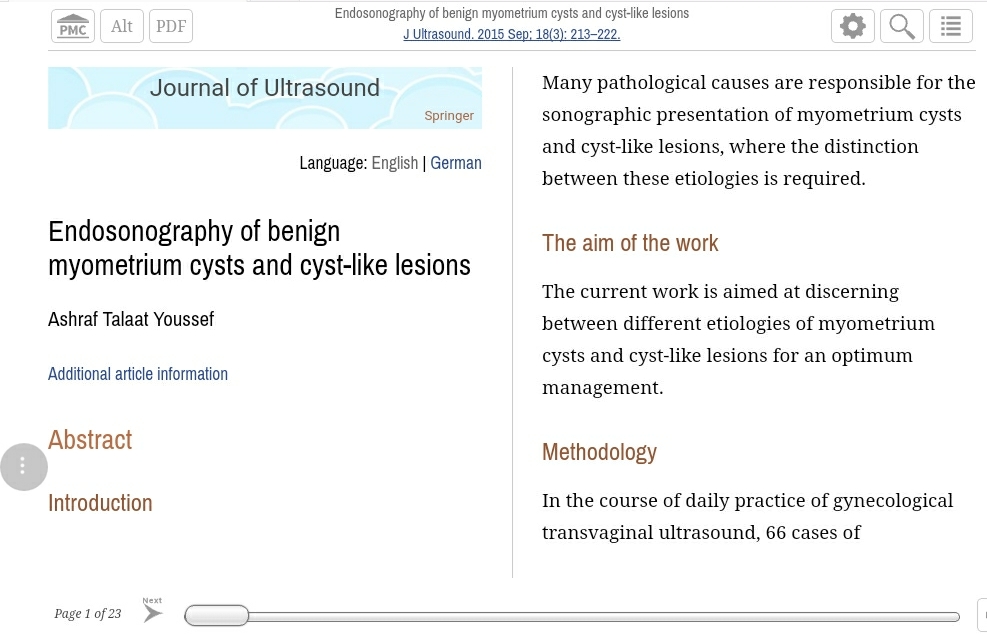
Read the complete article:
Journal Club: Evaluation of hepatic fibrosis: a review from the society of abdominal radiology disease panel
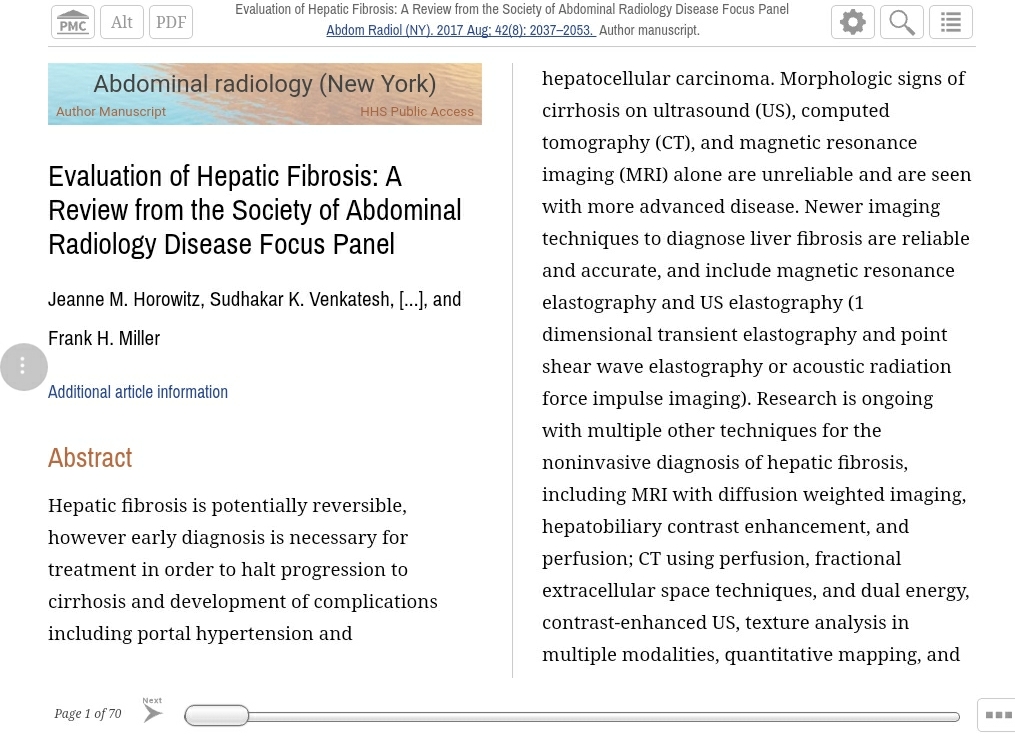
Read the complete article: https://www.ncbi.nlm.nih.gov/pmc/articles/PMC5994771/
Journal Club: Magnetic resonance imaging spectrum of perinatal hypoxic ischemic brain injury
Sharing an article published by Dr Binoj Varghese, et al; that was awarded the BEST RESEARCH PAPER published in IJRI 2018, at the National IRIA conference at Chandigarh 2019
1. Indian J Radiol Imaging. 2016 Jul-Sep;26(3):316-327. Magnetic resonance imaging spectrum of perinatal hypoxic-ischemic brain injury. Varghese B, Xavier R, Manoj VC, Aneesh MK, Priya PS, Kumar A, Sreenivasan VK.
Erratum in Indian J Radiol Imaging. 2016 Oct-Dec;26(4):530.
Perinatal hypoxic-ischemic brain injury results in neonatal hypoxic-ischemic encephalopathy and serious long-term neurodevelopmental sequelae. Magnetic resonance imaging (MRI) of the brain is an ideal and safe imaging modality for suspected hypoxic-ischemic injury. The pattern of injury depends on brain maturity at the time of insult, severity of hypotension, and duration of insult. Time of imaging after the insult influences the imaging findings. Mild to moderate hypoperfusion results in germinal matrix hemorrhages and periventricular leukomalacia in preterm neonates and parasagittal watershed territory infarcts in full-term neonates. Severe insult preferentially damages the deep gray matter in both term and preterm infants. However, associated frequent perirolandic injury is seen in term neonates. MRI is useful in establishing the clinical diagnosis, assessing the severity of injury, and thereby prognosticating the outcome. Familiarity with imaging spectrum and insight into factors affecting the injury will enlighten the radiologist to provide an appropriate diagnosis.
DOI: 10.4103/0971-3026.190421 PMCID: PMC5036328 PMID: 27857456
Read complete article:
AIUM Official Statement: Guidelines for cleaning external and internal use ultrasound transducers between patients, safe handling and use of ultrasound coupling gel
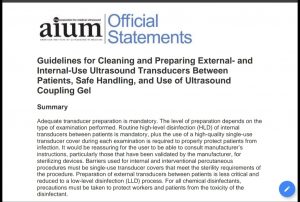
Read the complete article: Guidelines_Cleaning_Preparing
Online Course Resource-Writing a paper: Module 5- Introduction
In previous modules, we have looked at choosing words, constructing effective sentences and effective paragraphs. In this module, we will look at constructing an effective introduction for your research manuscript.
Journal Club: Artefacts and pitfalls in MR imaging of the pelvis
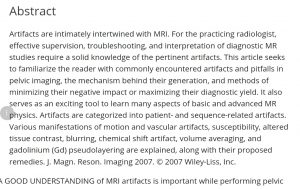
Read the complete article: https://onlinelibrary.wiley.com/doi/full/10.1002/jmri.20996
Journal Club: High prevalence of cervical perineural cysts on cervical spine MRI-Case series
CITATION: Gossner J. High prevalence of cervical perineural cysts on cervical spine MRI. Int J Anat Var. 2018;11(1): 18-19.
ABSTRACT
The Cervical perineural (Tarlov) cysts have been reported to be a rare occurance. The frequency, distribution and possible clinical relevance of such perineural cyst in the cervical spine were studied. In a retrospective review of
41 patients undergoing cervical spine MRI 6 patients showed perineural cysts (14%). Size ranged from 4 to 12 mm and the lower cervical was predominantly affected. The reported clinical symptoms could not be correlated to the found perineural cysts. Cervical perineural cysts seem to be a common asymtomatic incidental finding. The rare diagnosis of a symptomatic perineural cyst should be made with caution and is a diagnosis of exclusion.
READ THE COMPLETE ARTICLE: high-prevalence-of-cervical-perineural-cysts-on-cervical-spine-mri


